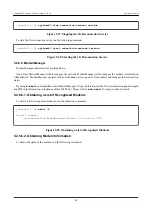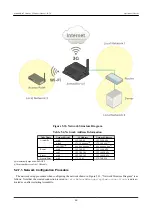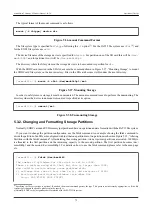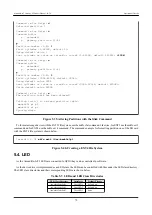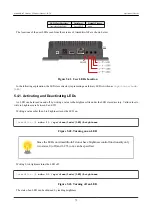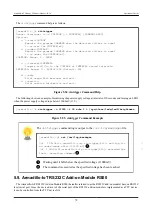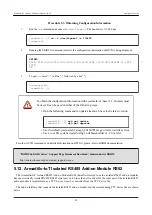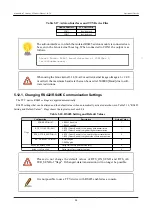
Command (m for help): d
Selected partition 1
Command (m for help): n
Command action
e extended
p primary partition (1-4)
p
Partition number (1-4): 1
First cylinder (1-62528, default 1):
Using default value 1
Last cylinder or +size or +sizeM or +sizeK (1-62528, default 62528): +100M
Command (m for help): n
Command action
e extended
p primary partition (1-4)
p
Partition number (1-4): 2
First cylinder (3054-62528, default 3054):
Using default value 3054
Last cylinder or +size or +sizeM or +sizeK (3054-62528, default 62528):
Using default value 62528
Command (m for help): w
The partition table has been altered!
Calling ioctl() to re-read partition table.
mmcblk0: p1 p2
mmcblk0: p1 p2
Syncing disks.
Figure 5.39. Altering Partitions with the fdisk Command
To format a storage device with the FAT32 file system, use the mkfs.vfat command. Likewise, for EXT3 use the mkfs.ext3
command and for EXT4 use the mkfs.ext 4 command. The command example for formatting partition one of the SD card
with the EXT4 file system is shown below.
[armadillo ~]# mkfs.ext4 /dev/mmcblk0p1
Figure 5.40. Creating a EXT4 File System
5.4. LED
As the Armadillo-IoT's LEDs are connected to GPIO they can be controlled in software.
As the device driver is implemented as an LED class, the LEDs can be controlled with files under the LED class directory.
The LED class directories and their corresponding LEDs are shown below.
Table 5.7. LEDs and LED Class Directories
LED Class Directory
Interfaces
Default Trigger
/sys/class/leds/led1/
User LED1
default-on
/sys/class/leds/led2/
User LED2
default-on
/sys/class/leds/led3/
User LED3
none
Armadillo-IoT Gateway G3Product Manual - INTL
Operational Checks
72






